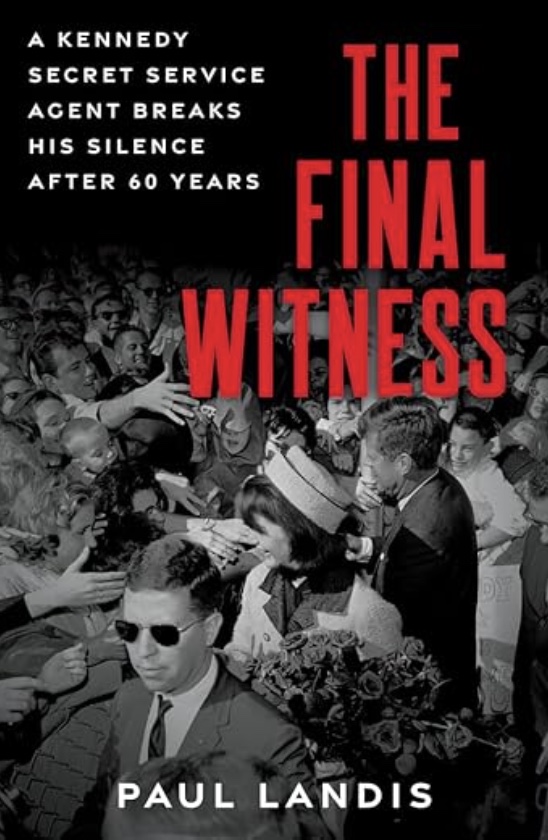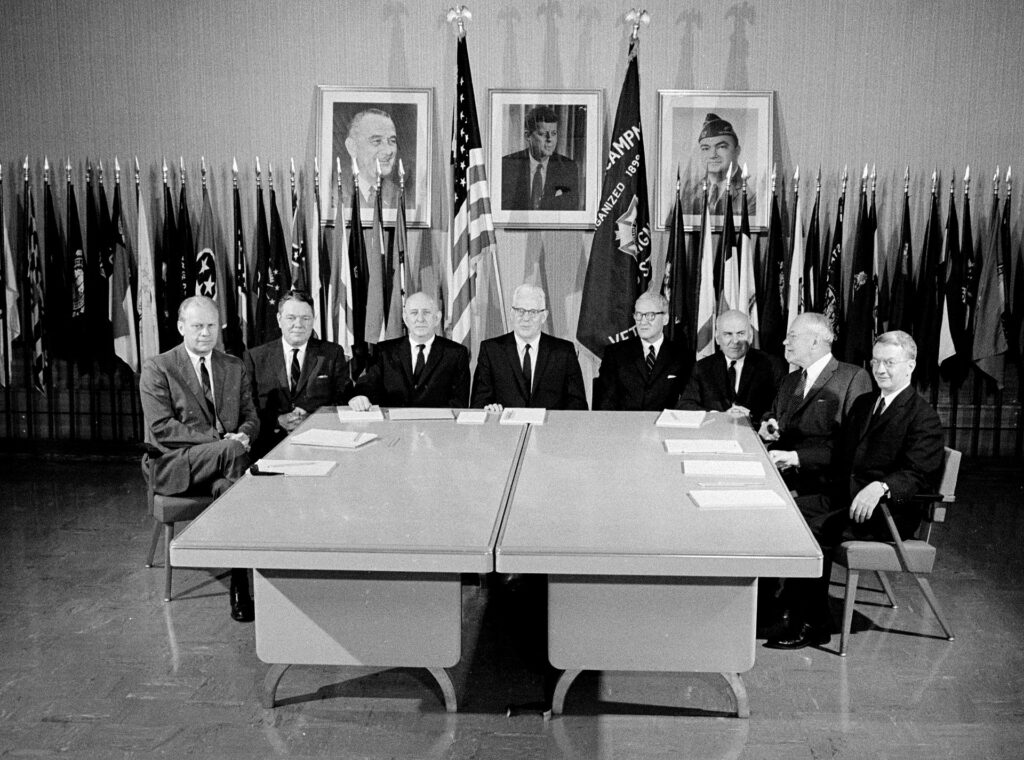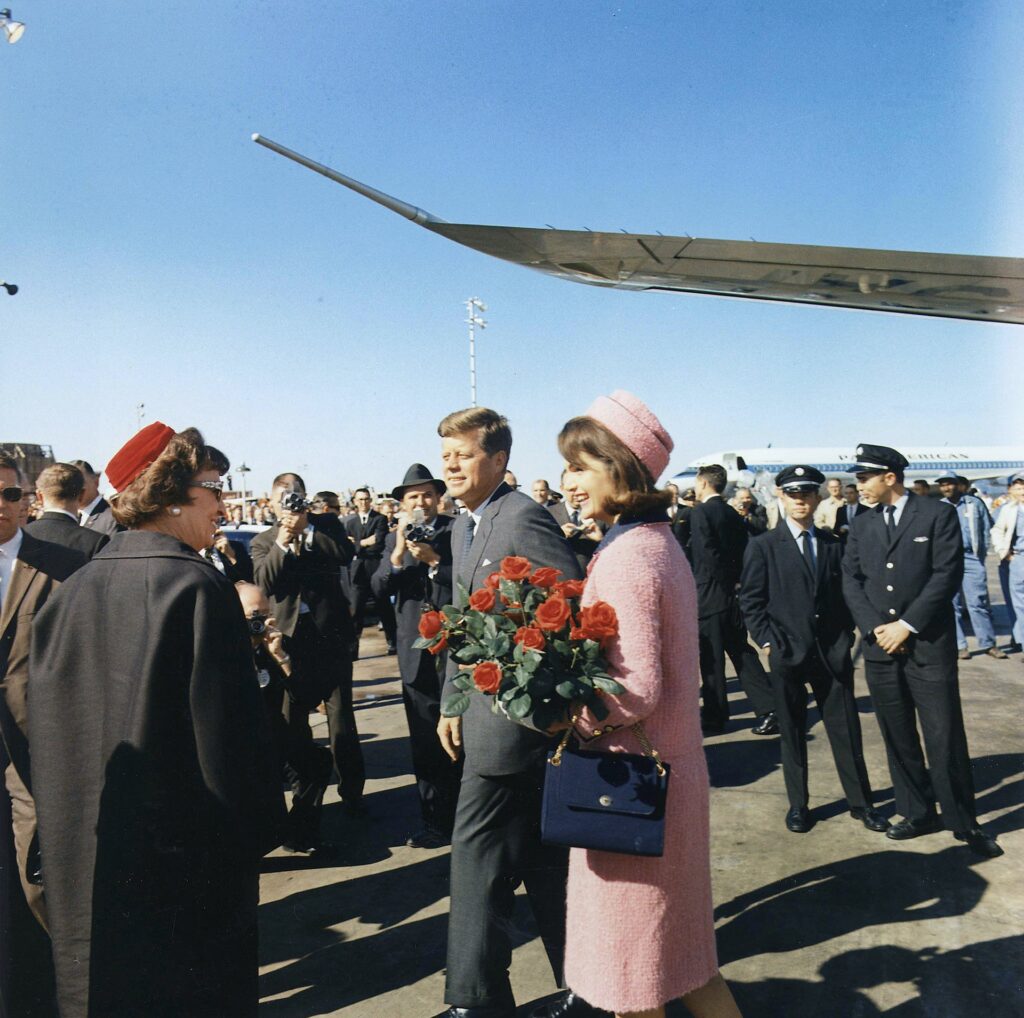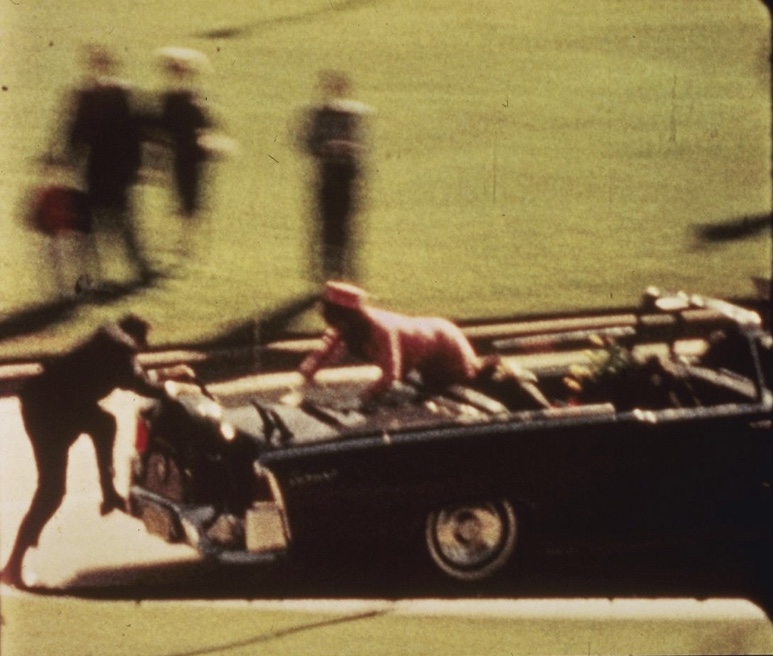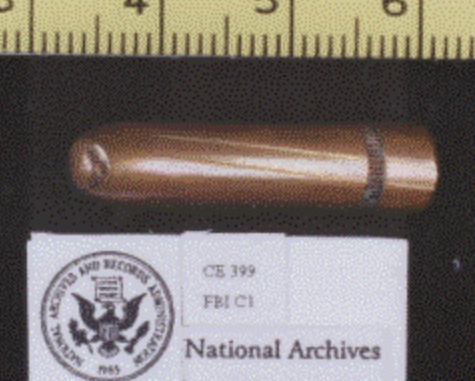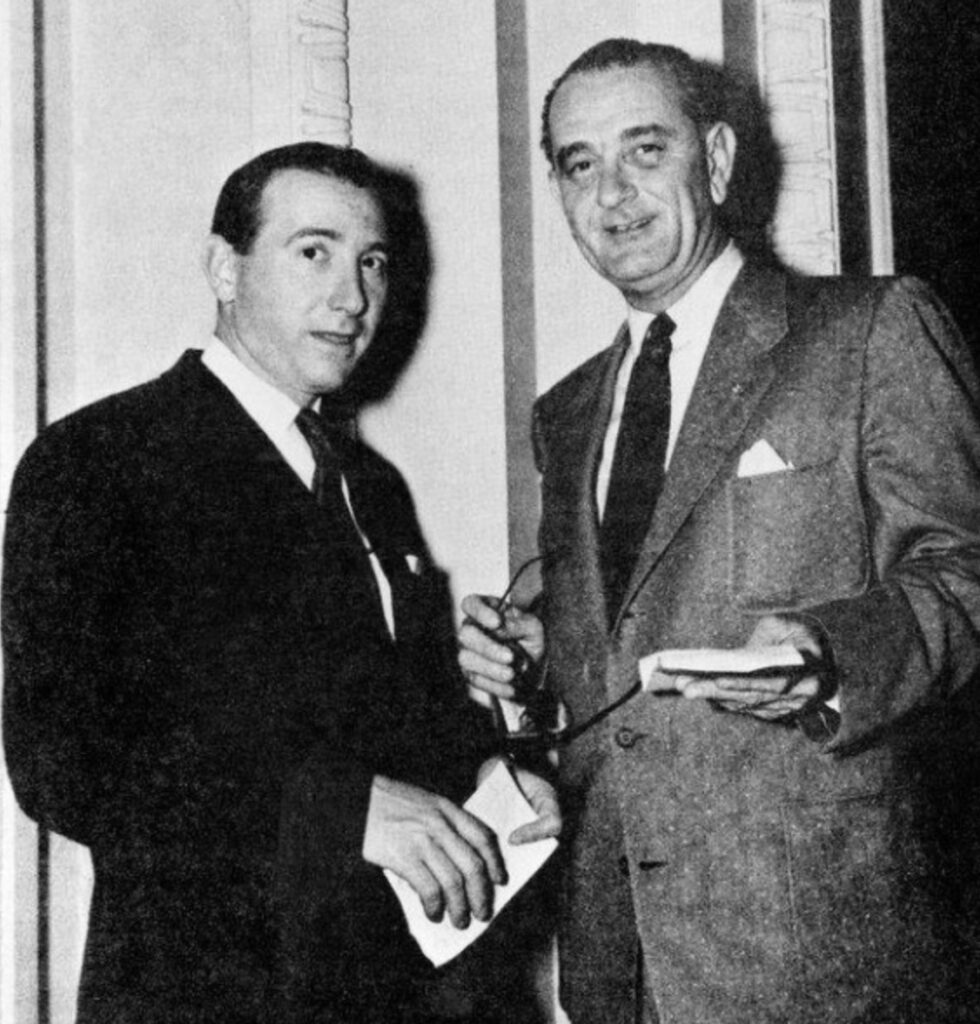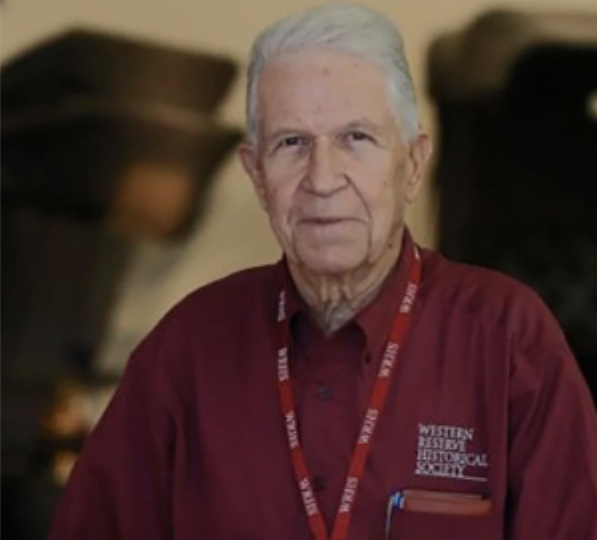Introduction
In late 2023 a book was published that set the JFK assassination research community on its collective ear. The book, entitled “The Final Witness”, was written by an aging former secret service agent named Paul Landis, and in it he describes his career serving on the protection detail for Jacqueline Kennedy during her husband’s presidency. In that capacity, on November 22, 1963, Landis was riding in the car behind the presidential limousine, as it made its way down Main Street, through downtown Dallas, took the right turn on Houston street, the left on Elm and on into the Dealey Plaza kill zone. Thus, along with the many other witnesses in the Plaza that day, he heard the shots and personally witnessed JFK’s murder.
As significant as that was, however, it’s what Landis discovered in the president’s limousine after the motorcade arrived at Parkland Hospital that has so rocked our understanding of what happened that tragic day in Dallas. To understand this, you must realize that for the last 60 years the American people have been subjected to the explanation for Kennedy’s assassination contained in the Warren Commission Report, which claims that the president was killed by a lone gunman named Lee Harvey Oswald firing an old Italian rifle from the 6th floor of the Texas School Book Depository. The Warren Report states that Oswald got off three shots; that two struck the president from behind, the first in his upper back, just to the right of the spinal column. The second shot to hit Kennedy, the Report says, was the third Oswald fired—the kill shot—supposedly striking the president in the back of the head. If that accounts for the first and third shots, what, then, of the second? Initially the FBI reported that the second shot was the one that struck Texas Governor John Connally, who was riding in the limousine jump seat in front of Kennedy. Connally was hit in the back by a bullet that exited his chest after obliterating 3 inches of a rib bone and puncturing a lung. The bullet then continued to do damage, striking Connally’s right wrist, shattering it, then exiting the wrist and lodging itself in the governor’s thigh, causing a superficial wound. That’s five wounds from that one bullet—a rather remarkable performance for one bullet—but you ain’t heard nothin’ yet.
As the commissioners carried out their investigation two major problems emerged, both invalidating the idea that the second bullet had struck Connally. First, a Dallas dress maker named Abraham Zupruder had taken a home movie of the president’s motorcade as it passed through Dealey Plaza, thus providing a film of the assassination as it took place. That film provides a time line of the assassination, and though it would not be shown broadly to the American people until Geraldo Rivera displayed it on his TV show in 1975, the Warren Commission had full access to it in 1964, as well as the problems it presented. In a nutshell, the Zapruder film clearly shows Kennedy being hit and clutching his throat, and about 1.8 seconds later it shows Connally reacting to being shot. The problem is that Oswald’s cheap Italian bolt action rifle takes 2.25 seconds to recycle, making it impossible for the shot hitting Connally to have been fired by Oswald.[1] And then the second problem came up. A Dealey Plaza witness named James Tague told a newspaper reporter that he had been standing by the triple underpass as the first shot was fired, and was hit on the cheek by a shard of concrete, drawing blood, blasted from the curb by a bullet strike. That bullet, which missed both JFK and Connally, meant that they now had four shots to deal with (the two that hit JFK, the one striking Connally, and the Tague curb shot). With Oswald only having time to fire three, that meant there must have been a second shooter—something the Commission was completely unwilling to consider.
At this point the Commission faced a dilemma. Unwilling to consider the possibility of a conspiracy in the killing of the president, yet faced with the evidence there were at least four shots, which meant there had to be a conspiracy, they needed to concoct a “reasonable” explanation. It was then that one of the Commission staffers, an attorney named Arlen Specter, who would later become a senator from Pennsylvania, came up with the “single bullet theory,” also called the “magic bullet theory”, due to its implausibility. Specter’s theory posits that the bullet that hit Kennedy in the back travelled through his body and exited at his throat, then continued forward to cause all five of the earlier described wounds in Connally. As should be obvious, that means that one bullet caused all seven wounds in Kennedy and Connally. Making it all even more implausible was the statement in Specter’s theory that a nearly pristine bulletin [2] was recovered from a gurney in the hallway at Parkland hospital after JFK and Connally had been treated, and that supposedly this bullet was the one that caused all seven of the wounds, ultimately falling from Connally’s body onto the gurney. Now perhaps you understand why this bullet earned the moniker “magic”. After causing the seven wounds, penetrating layers of clothing, tissue and skin, and breaking two bones, it supposedly emerged from Connally’s body with nearly no damage to it—in other words, “pristine.”
In adopting the single “magic” bullet explanation instead of the obvious conspiracy explanation, the Warren Commission ignored not only the logical second shooter conclusion based on the shot timing evidence described above, but also the fact that Governor Connally himself didn’t believe he was struck by the same bullet that hit Kennedy. They also ignored the fact that the Parkland Hospital doctors, seasoned gunshot trauma doctors all, had identified JFK’s throat wound as an entry wound and the blow-out wound in the back of head as an exit wound (meaning Kennedy was shot from the front, as well as the back); the fact that Kennedy’s back wound was too low in the back for the bullet to emerge from his throat, considering the downward angle from the 6th floor Book Depository window Oswald supposedly fired from; and the fact that during the autopsy at Bethesda, in attempting to track the bullet path of the back wound, the autopsy doctors could track it no further than an inch or so into his body, indicating that the bullet did not actually transit the president’s body. This last fact has special relevance to the revelation Paul Landis makes in his book, and which I will now discuss.
______________________
A Witness to Tragedy
At the time of President Kennedy’s assassination Paul Landis was 28 years old and had been in the Secret Service for four years. Initially assigned to the “kiddie detail” in 1961, protecting the Kennedy children, during the Cuban Missile Crisis in 1962 he was reassigned to the security detail for Jacqueline Kennedy, joining veteran agent Clint Hill, who’d been on the post since JFK was elected. Hill would go on to become famous in his own right as the agent who made the leap onto the back of JFK’s limousine to protect Mrs. Kennedy, who’d climbed from the back seat of the limousine onto the trunk of the car to retrieve a clump of the president’s brain that had been blasted out the back of his head. It was in that capacity as protection for the First Lady that both Hill and Landis had made the trip to Dallas, and thus were in the motorcade in the car behind the President’s limousine as it made its way through downtown and toward Dealey Plaza.
The way that Landis describes it in his book, on arriving at Dealey Plaza JFK’s limousine had just made the left turn from Houston Street onto Elm Street when he heard what he thought was the report of a high-powered rifle, coming from behind his right shoulder. While some witnesses and Secret Service people thought it sounded like a fire cracker, for Landis, who besides his Secret Service training was a lifelong hunter very experienced with rifle shots, there was no doubt what it was: he instantly realized that the president was being fired at. His first response was to turn in the direction of the shot, looking back over his right shoulder, but saw nothing. He then turned his attention forward and saw the President, leaning to his left and raising his arms. Landis had no way of knowing, but what he saw at that point, as verified by the Zapruder film, was the president responding to being hit the first time, raising his hands to clutch his throat. Not realizing this, Landis again turned his head back to look over his right shoulder to spot any clue or source of danger he could, but all he saw was people running, scattering and plunging to the ground. On turning back towards the front, he instantly saw Clint Hill, who had leaped from his spot on the left running board of their car (Landis was on the right) and was sprinting toward the president’s limousine.
At this point in his narrative Landis explains that the President’s limousine was equipped with grab bars and steps on the back of the car, and that ordinarily there would be Secret Service people standing on those steps, as well as jogging alongside the car. They weren’t there that day in Dallas, according to Landis, because JFK, feeling their presence would inhibit his contact and visibility with the public, had requested they not be present. Landis states that the agents knew this would be an increased security risk, but felt compelled to follow the president’s request anyway. This explains, at least partially, the odd omission and failed adherence that day to what are standard Secret Service presidential protection protocols. (It doesn’t explain why other elements of standard presidential protection, such as securing the buildings along the motorcade route, ensuring all windows were shut etc. were not carried out.) Clint Hill’s objective, as he sprinted toward the limousine, was to get to those steps and grab bar before the limo speeded up, to provide what protection he could to the president and First Lady. Then, states Landis, just as Hill arrived at the rear of the limo and started to pull himself up, a second shot rang out. While he says this shot also came from behind him, he says that it sounded different from the first; that it had a different reverberation; a different feeling. At first thinking that the shot may have been an echo of the first shot, he quickly dismissed the idea, as too much time had passed. He then once again looked toward the president, noting that he was still fairly upright, leaning slightly against his wife, who had her arm around his shoulders. At that point Clint Hill was almost on top of the trunk, and Landis thought that the second shot had missed. The fleeting thought occurred to him that perhaps they could reach safety before any more damage could be inflicted, but what happened next shattered that illusion.
As Landis describes it, though events were happening very fast, to him things seemed to be moving in slow motion, taking forever—In reality, however, maybe five seconds had passed since the first shot. Suddenly, a third shot rang out, and, as Landis was looking at him, JFK’s head exploded “in a pink spray of blood, flesh and brain matter.” Reflexively ducking to avoid being splattered, Landis states that his next view was of agent Hill on top of the limo trunk, and the First Lady crawling out of the back seat toward him, “as if reaching for something.” Hill managed to get her back down into the rear seat, and then positioned himself over the president and his wife, protecting them with his body as the limousine now sped up, racing to get to Parkland Hospital. About six seconds had passed since the first shot, according to Landis, and he states that another agent noted the time as exactly 12:30 PM.
Parkland Hospital
As the cars raced down Stemmons Freeway toward the hospital, Landis states that he knew there was no reason to rush, as no one could survive the wound suffered by JFK. Of course, he had no way of knowing that Governor Connally had also been critically wounded and needed immediate medical attention. His thoughts about the President were confirmed seconds later when agent Hill looked back at him from the limo and, shaking his head from side to side, gave the “thumbs down” signal. At that point Landis knew that President Kennedy was already dead. Minutes later he saw the limousine’s brake lights flash as the car made a right turn and pulled up at Parkland Hospital. As significant as what Paul Landis had just witnessed was, it is what happened next that changes everything we’ve been officially told for the last 60 years about the assassination of John F. Kennedy.
When the president’s limousine and the following car containing Paul Landis arrived at Parkland it was exactly 12:38 PM, eight minutes after the shooting, but already there was a crowd of people, some medical and some civilian, waiting. With his one thought being to get to Mrs. Kennedy to fulfill his protection mission, he leaped from his car and raced to the limousine. Once there he encountered the dreadful sight: a seriously wounded Connally in the jump seat in front of the President, and Jacqueline Kennedy in the back seat cradling her husband’s head in her lap; blood and brain tissue splattered everywhere. He also notes seeing a crack or chip in the limo’s front windshield. Looking down at the seat beside the First Lady, he saw what he describes as “two brass bullet fragments sitting in a pool of bright red blood.” He then reached down and picked up one of the fragments to examine it, stating that it was about the size of his little finger tip, and that it looked like a mushroom that had been squashed.
As Mrs. Kennedy was unwilling to release her husband’s head, it took extra effort to get her and the President’s body out of the car. Governor Connally had to be removed first, and once that was done agent Hill finally convinced Jackie to release the president, so he could be gurneyed into the hospital with her following right behind. As the First Lady exited the car, Landis happened to look at the seat where she had been sitting. Resting there, behind where she had been, where the tufted black leather of the seat ended against the metal of the car body (I presume at the top of the seat), was a completely intact bullet. Surprised by the find, Landis picked the bullet up and examined it. He states that it was approximately two inches long and, though it had rifle striations running lengthwise along the sides, that it was not distorted in any way and was in nearly perfect condition. At that point, as Landis describes it, he was confronted with a dilemma. He comments that, oddly, at that exact moment there were no other Secret Service agents about as they had all gone with the president’s body. Yet the limousine was a crime scene, and at that moment completely unsecured. Anyone could have walked up and snatched the bullet, the bullet fragments, or any other evidence lying about.
As any writer of history will tell you, it takes a long time and many words to describe an incident that occurs in fractions of a second, and such is the case with what Landis describes in finding the bullet. Maybe two seconds had passed since Mrs. Kennedy had left her seat, during which all the above happened. Landis’ solution to his dilemma, in the confusion and chaos of the moment, was to put the bullet in his pocket and then hurry to catch up with Mrs. Kennedy; she was, after all, his primary mission. The scene inside Parkland Hospital, by the time Landis arrived there, was even more chaotic than outside, with people everywhere blocking the way. He stayed close to Mrs. Kennedy as the president’s gurney was hurried through the lobby and then down a short corridor to Trauma Room 1. To get through the door into the trauma room, the gurney had to be pivoted 90 degrees, a very tight fit, which forced Mrs. Kennedy, and Landis in turn, to follow behind it, while being pushed from behind by a crowd of people trying to get into the room. To escape the crowd the First Lady, on entering the room stepped to the side of the door, but Landis had no such luck; the crowd pushing him from behind and trapping him against the foot of the gurney, on which lay the body of the president.
Meanwhile, at the top of the gurney the doctors were working over JFK’s head wounds, with most of the crowd in the room straining to see. It was then that Landis had the thought, “This is where the bullet belongs, with the president’s body. This bullet is important evidence. A doctor will find it, and it might be helpful during the autopsy.” Landis then retrieved the bullet from his pocket and placed it on the white cotton blanket on the gurney next to the president’s left foot. He got a brief scare when the bullet began to roll off, but he was able to stop it and ensure it stayed there. In all the confusion no one had seen him do it, and that is where the bullet remained when, moments later, Paul Landis left Trauma Room 1.
What Really Happened and Who Did It
If you are a student of the JFK assassination you no doubt have some grasp of the importance of Landis’ bullet revelation to our understanding of what happened that day in Dallas. The “Magic Bullet Theory” is the lynchpin of the Warren Report; vitally necessary to the conclusion that Oswald was the lone assassin. As implausible as it is, and it IS implausible, without it the conclusion of at least a fourth shot, and thus a conspiracy, would be forgone. Of course, it’s pretty obvious to anyone who can confront facts that the Magic Bullet is, and always has been, the height of fiction, making it clear that the Warren report is a sham, but Landis’ revelation goes a long way toward confirming it. If you are not as familiar with the Magic Bullet, otherwise called “Committee Exhibit 399” (CE-399), in addition to what I provided earlier in this article I am including the following key points:
- Shortly after the President and Governor Connally had been treated at Parkland Hospital, one of the hospital’s engineers, a man named Darrell Tomlinson, was moving some of the gurneys and, after bumping one of them into a wall, was startled to see a bullet fall out. Like the bullet found by Landis in the limousine, the bullet discovered by Tomlinson was nearly pristine in appearance. The bullet was passed along to the Secret Service and from there to the FBI, which reportedly tested it and verified it was from Oswald’s rifle. This is the bullet that Arlen Specter seized upon as the “single (Magic)” bullet.
- Specter and the Warren commission simply assumed without proof that the gurney the bullet was found on was the one transporting Connally. For them that had to be the case. If not, the Magic Bullet theory went up in smoke.
- X-Rays of Governor Connally revealed bullet fragments still in his body, the volume of which was greater than any particles missing from the “pristine” Magic Bullet, from which nearly nothing was missing. That pristine bullet could not have been the one that struck Connally.
- Two FBI agents assigned to observe JFK’s autopsy at Bethesda Naval Hospital both wrote reports on what they saw, and both stated that the doctors could track the President’s back wound no further than an inch or so into his body. It was because of this fact that the FBI initially reported that Connally was hit by the second shot, and not a continuation of the first shot that hit Kennedy from behind. That couldn’t have been the shot that hit Connally, as that shot did NOT transit Kennedy’s body.
- The Commission made tests of similar bullets fired through cadavers, gelatin blocks and bodies of goats, in every instance showing extreme damage to the bullets, yet they still adopted the pristine Magic Bullet theory.
I could mention more, but I think I’ve made my point.
As opposed to a Magic Bullet, very likely something resembling the following is what actually happened that day in Dealey Plaza: Kennedy was the victim of cross fire, with shots coming from the front, from behind (Book Depository) and from the right front (Grassy Knoll). He was hit 3 times, once in the throat, once in the back (the shot that travelled two inches into his body), and then the head shot. Connally was hit by another shot, and maybe hit twice (he had five wounds, after all). Then there was the shot that missed and caused the shrapnel wound to James Tague’s cheek, as discussed in this article’s introduction. That gives a total of at least 5 shots, maybe 6, meaning there was undoubtedly a conspiracy. The bullet that Paul Landis found in the backseat of the Kennedy limousine and placed on the exam table in Trauma Room 1 was almost certainly the shot that barely penetrated Kennedy’s back, most likely the result of an undercharged bullet which then fell out of his body,[3] thus explaining its pristine nature. Or it could be yet another bullet, which further compounds the number of shots issue. Equally almost certain: this is the same bullet discovered by Darrell Tomlinson on the gurney at Parkland—how often in such a situation will you find two “pristine” bullets?
As to who carried out the assassination, personally I am much more interested in the “why” as to the “who,” but I’ll share my thoughts nonetheless. The President’s assassination was perpetrated by elements of three groups, best described as the CIA, the Mafia and the anti-Castro Cubans. All three groups had means, motive and opportunity for killing the president. What you must realize in discussing this, however, is that what all three groups have in common is the CIA. The Agency and the Mafia made common cause in trying to take out Castro, working together to kill the Cuban leader, and the anti-Castro Cuban groups that had sprung up in Miami were mostly funded and advised by the CIA. The Mafia hated the Kennedys for the obvious reason that Robert Kennedy as Attorney General had waged all-out war on them, and the anti-Castro Cubans hated JFK for his supposed failure to support them at the Bay of Pigs, their CIA backed, ill-fated invasion of Cuba in April, 1961. Specific officers within the CIA, mostly from the anti-Castro Cuban operations, hated JFK for failing to salvage their Bay of Pigs operation with the U.S. military, and for failing to invade Cuba during the Cuban Missile Crisis. In short, President Kennedy had pissed off a lot of people. I’m not prepared to say now that Lyndon Johnson was involved, though I am aware that in his confession toward the end of his life legendary CIA officer E. Howard Hunt named LBJ as the ringleader of the plot, in which Hunt himself was involved, along with long time CIA officer Chord Meyer. I will say that Lyndon Johnson also had a lot to gain from JFK’s death. At the time of the assassination he had been implicated in scandals with two long-time associates, Bobby Baker[4] and Billy Sol Estes[5], and likely would have been dropped from the ’64 ticket had Kennedy lived. All that changed on November 22, 1963, with the bullets fired in Dallas.
Epilog
The question remains, why did Paul Landis wait so long, nearly 60 years, before revealing what he knew? In his book he answers that question, stating that for years after the assassination he suffered from what he describes as “PTSD” with regard to what happened, complete with bad dreams, anxiety, and other indicators. Thus, he avoided talking about it and anything that reminded him of it. In his book he also states: “I didn’t read the Warren Commission Report until 2018, almost fifty-four years after it was first published. I never felt like I needed to read anything about that day. I was in Dallas in November 1963. I witnessed President Kennedy’s assassination in person. I was at Parkland Hospital. I was in Trauma Room #1. I didn’t need to read about the gruesome details of conspiracy theories. I was there.”
He also reports in his book that he was never called to testify before the Warren Commission, a fact which continued the disturbing pattern of the Commission failing to call key witnesses, of which there are many other examples. Here was a man, Landis, who had witnessed the assassination from the distance of just a few feet, yet his testimony was considered unnecessary. Had Landis testified, likely he would have divulged way back in 1964 his discovery of the pristine bullet in the back seat of the limousine, and we never would have been subjected to the crazy Magic Bullet theory. Wedded as they were to Oswald as the lone nut killer, however, and unwilling under any circumstances to acknowledge a conspiracy, the Commission would have tried to come up with something else. They would have been hard pressed to do so, as the bullet Landis found was in the back seat of the limousine, while Connally was seated in the jump seat in front of the Kennedys—no way did that bullet cause all the wounds in Connally, and clearly that bullet did not pass through Kennedy’s body from back to front.
And so, with the revelations of Paul Landis, 60 years after it was foisted upon the American people, we can at last kiss the Magic Bullet theory goodbye.
I, for one, am glad to see it go.
Copyright©2025
By Mark Arnold
All Rights Reserved
[1] The source I used for the timing of the shots is the summary of the Warren Report findings in the National Archives website.
[2] The legendary pristine “magic bullet” is also known as CE-399 (CE stands for “Warren Commission Exhibit”)
[3] An undercharged bullet derives from insufficient powder in the cartridge, which can be caused by poor manufacture, damage to the cartridge (allowing powder loss) or even using powder not suitable for the cartridge. The fact JFK’s back wound was so shallow indicates an undercharged bullet.
[4] Robert Gene(Bobby) Baker (November 12, 1928 – November 12, 2017) was an American political adviser to Lyndon B. Johnson, and an organizer for the Democratic Party. He became the Senate’s Secretary to the Majority Leader (Johnson). In 1963, he resigned during an investigation by the Senate into his business and political activities. The investigation included allegations of bribery and arranging sexual favors in exchange for Congressional votes and government contracts. The Senate investigation looked into the financial activities of Baker and Lyndon Johnson during the 1950s. The investigation of Lyndon Johnson as part of the Baker investigation was later dropped after President Kennedy’s assassination and Johnson’s ascension to the presidency.
[5] Billy Sol Estes(1925-2013) was a flamboyant Texas wheeler dealer best known for his role in a scandal that broke out during President Kennedy’s administration involving phony financial statements and non-existent fertilizer tanks. The scandal caused several lower-level Agriculture Department officials to resign, and Estes spent several years in prison. His connection to Lyndon Johnson through large campaign contributions led to speculation that LBJ was also involved, but after JFK’s assassination and LBJ becoming president any further investigation was dropped.
